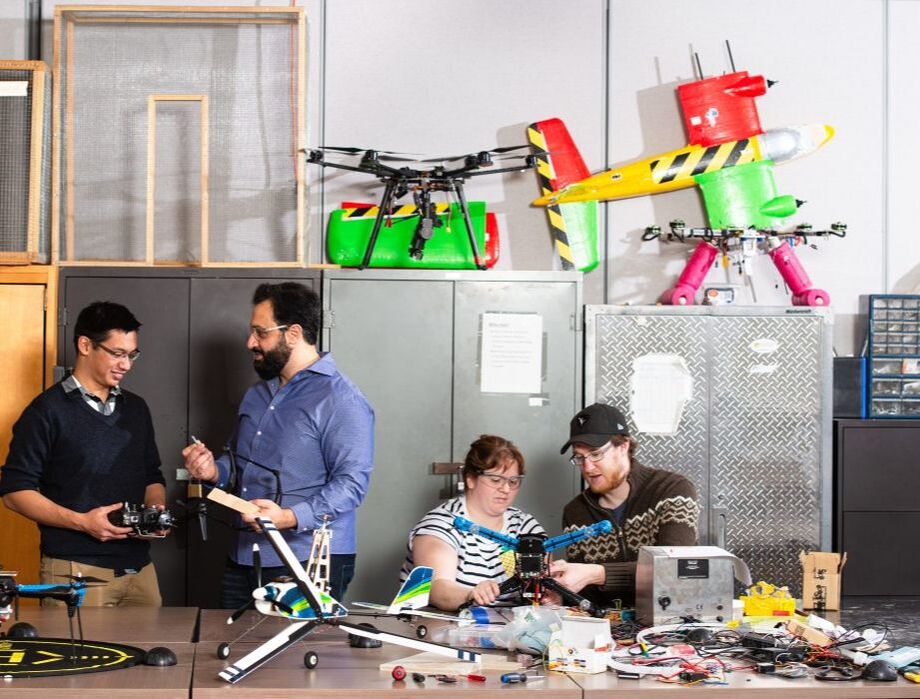- Home
- Technology
- Management
- Health Care
- Earth Sciences
- Particle Physics
- Engineering
- Stories of Turtle Island
- Startup Companies
- The Lost Ships of the Franklin Expedition
- Wildlife
- Archaeology
- Palaeontology
- Architecture, Land Use and Planning
- Politics and International Development
- COVID-19
- University Life
Five Queen's University researchers earn Tier II Canada Research ChairsWomen experience war differently than men do, and their full participation in peace and security efforts is critical to forging lasting peace.
In October 2000, the United Nations Security Council passed Resolution 1325, which recognizes the important role women have in preventing and resolving conflicts. The Women, Peace, and Security Agenda grew out of that resolution and, 20 years later, has catalyzed changes in how peace and security organizations approach conflicts. But each organization has charted its own path. “Traditional conflict resolution didn’t properly acknowledge how war was experienced differently,” says Dr. Stéfanie von Hlatky. Click here for full story |
Canada Research Chair explores applications for nanoparticlesFrom the moment that our ancestors built the first fire, humans have been using combustion to create nanoparticles. But we are only just beginning to harness the power of fire to control the properties of the nanoparticles that we produce.
“We are all familiar with the black smoke coming out of a candle. These particles are one type of combustion-made nanoparticle, and they have been used for thousands of years. In ancient Egypt and China, nanoparticles from smoke were captured and used to make ink. However, these are just one type of nanoparticle that we can make with combustion,” says Reza Kholghy, an Assistant Professor and Canada Research Chair in Particle Technology and Combustion Engineering. Click here for full story |
Canada Foundation for Innovation to fund Abilities Living LaboratoryWhen COVID-19 lockdowns closed theatres and cancelled concerts, it gave many Canadians their first taste of what it’s like to live in a city without entertainment options. But people with disabilities have always had much more limited access to cultural events.
Adrian Chan is working to change that. Chan is leading the creation of the Abilities Living Laboratory (ALL), a new, collaborative lab space that is partly funded through a $2.37 million grant from the Canada Foundation for Innovation. ALL will make it easier for academic researchers and community partners to develop products that directly address accessibility challenges. Click here for full story |
NSERC CREATE Grant to fund aerospace industry internshipsDrones are our eyes in the sky, and they give us novel ways of understanding what’s happening on the ground. Drone-mounted sensors and cameras can help identify hot spots that can cause potential forest fires, inspect aging infrastructure, and identify the impact of climate change and extreme weather events. And they take a pretty decent picture too.
Carleton is working with 12 industry partners to get aerospace and mechanical engineering graduate students hands-on, industry experience in a collaboration funded through a $1.65M NSERC Collaborative Training and Research Experience Program (CREATE) grant. There will be 200 graduate student internships available through the Uninhabited Aircraft Systems Training, Innovation and Leadership Initiative (UTILI). Click here for full story |
Government agencies to fund building energy efficiency researchIn a land of frigid winter nights and steamy summer days, buildings are our shelter. They keep us warm — and cool. But they use a whole lot of energy doing it. Carleton’s new Centre for Advanced Building Envelope Research (CU-CABER) is working on ways to make them more efficient.
Led by Associate Professor of Mechanical and Aerospace Engineering Cynthia Cruickshank, CU-CABER is a six-year, $5.1M initiative supported by Natural Resources Canada’s Energy Innovation Program ($3M) and the Ontario Research Fund ($2.1M). CU-CABER will develop and evaluate new building envelope technologies, and provide hands-on training opportunities for students at the collegiate, undergraduate and post-graduate levels. Click here for full story |
CIHR funds research seeking stem cell treatments for Type 1 DiabetesThe human pancreas is only about 15 cm long, but within it are about a million tiny islets of hormone-producing cells. Though they are many in number, these islets are tiny – they make up only 2-3% of the volume of the pancreas. Cells within these islets secrete hormones that help us regulate our blood sugar. And when they malfunction, it can cause diabetes.
Carleton’s Jenny Bruin is part of a team of researchers that has been awarded a 5-year, $3 million grant from the Canadian Institutes of Health Research (CIHR) and JRDF Canada to develop a novel therapy that transplants insulin-secreting cells derived from stem cells into patients with Type 1 diabetes. This could reverse the effects of the condition, and help eliminate diabetics’ need for insulin therapy. Click here for full story |





